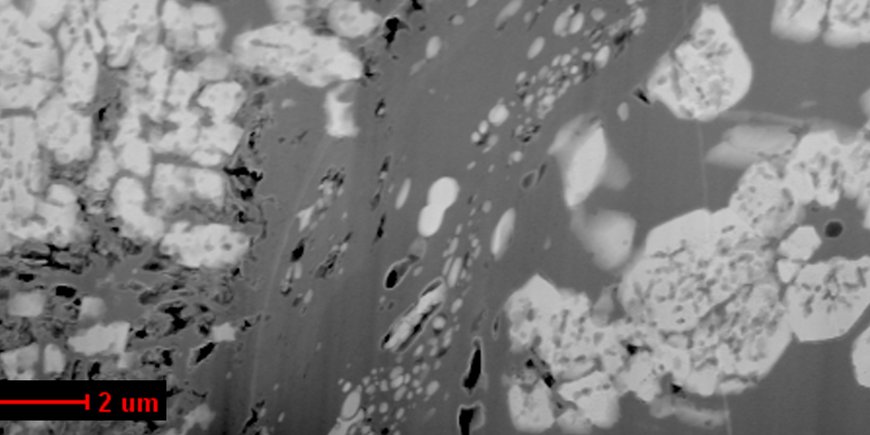Oxygen, Phosphorous and Early Life on Earth
17.11.2013 |Two billion years ago the Earth system was recovering from perhaps the single-most profound modification of its surface environments: the oxygenation of the atmosphere and oceans. This led to a series of major changes in global biogeochemical cycles, as a team around Aivo Lepland of the Norwegian Geological Survey NGU reports in the latest online edition of “Nature Geoscience”.
This also resulted in the distribution of one of life’s key elements, phosphorous. Studies on the unique organic-rich Zaonega rock formation preserved in Carelia, NW Russia, with an age of around two billion years has revealed an astonishing result: “The formation of Earth’s earliest phosphorites was influenced strongly, if not controlled completely, by the activity of sulfur bacteria”, says co-author Richard Wirth of the GFZ German Research Centre for Geosciences, who analyzed the rock samples with an electron microscope. “This activity occurred in an oil field setting that had been influenced by active volcanism and associated venting and seeping.” In the modern world, sulfur bacteria inhabit upwelling vent and seep areas known as “Black Smokers” and mediate phosphorite formation. The authors therefore conclude that the formation of the earliest worldwide phosphorites 2 billion years ago can be linked to the establishment of sulfur bacteria habitats, triggered by the oxygenation of the Earth.
Aivo Lepland et al.: “Potential influence of sulphur bacteria on Palaeoproterozoic phosphogenesis”, Nature Geoscience Advance Online Publication, Doi 10.1038/ngeo2005








![[Translate to English:] Torsten Sachs in front of a climate station on a field](/fileadmin/_processed_/3/9/csm__TorstenSachs_bearbeitet_GS_4a1365ef84.jpeg)

![[Translate to English:] left image flood at the Ahrtal: image from above, several houses are flooded; left image:: Heidi Kreibich;](/fileadmin/_processed_/4/4/csm_Bild2_9af0130e9f.png)



![[Translate to English:] Start der Vega Rakete](/fileadmin/_processed_/6/4/csm_20231201-kachel_Vega-VV23-launch_ESA-CNES-Arianespace_706716b68c.jpeg)









![[Translate to English:] Poster exhibition at the Brandenburg Hydrogen Day at the GFZ, some participants in the foreground](/fileadmin/_processed_/6/5/csm_Erster_Brandenburgischer_Wasserstofftag_GFZ_402fcec95e.jpeg)
![[Translate to English:] Group picture of the participants](/fileadmin/_processed_/9/4/csm_20231108_CAWa-Workshop-Tashkent_Gruppenbild_99ea779d8a.jpeg)

![[Translate to English:] [Translate to English:] Hörsaal](/fileadmin/_processed_/e/6/csm_H%C3%B6rsal_e21ac645fb.jpeg)


![[Translate to English:] The Delegations in the Historic Library on the Telegrafenberg. In the back there are from left to right, the Dutch Ambassador for Germany, Ronald van Roeden, the Dutch Minister for Education, Culture and Science, Robbert Dijkgraaf and the scientific director of the GFZ, Susanne Buiter.](/fileadmin/_processed_/d/b/csm_Kachel-2_9eba4b4212.jpeg)

